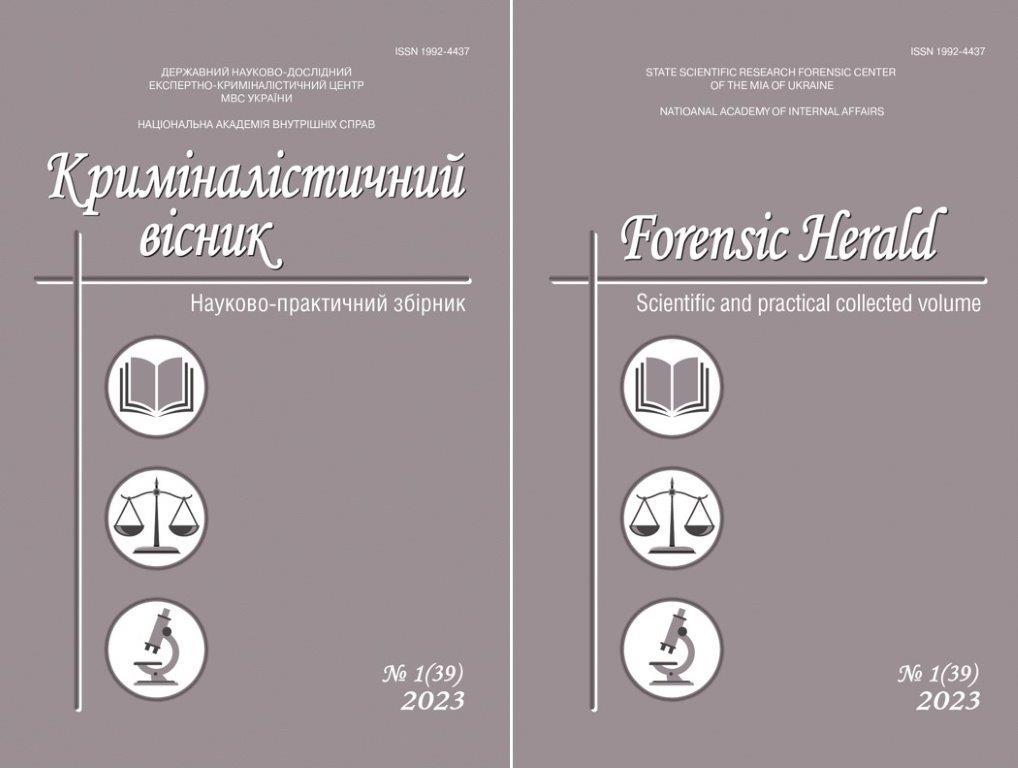ORGANIZATIONAL PRINCIPLES OF DNA IDENTIFICATION OF VICTIMS OF MASS CASUALTY EMERGENCIES
DOI:
https://doi.org/10.37025/1992-4437/2023-39-1-29Keywords:
investigation of disasters with mass casualties, forensic DNA analysis, identification of the dead, identification of missing persons, molecular genetic examination, identification of war victims, forensic sciences, forensic examinationAbstract
The purpose of the article is to determine, based on the analysis and synthesis of scientific approaches and
practical recommendations for the identification of disaster victims, the basic principles of organising the use of DNA
analysis technologies to identify the victims of mass casualties. Methodology. The methodological basis of the study is
based on the methods of comparative analysis, synthesis, induction and deduction, abstraction, explanation, thought
experiment, as well as a systematic and structural approach to the process of DNA identification of disaster victims as
a whole set of interconnected elements of a single operating system. Scientific novelty. For the first time in Ukraine,
based on the analysis and synthesis of the content of guidelines and scientific and methodological recommendations
on the identification of disaster victims, the basic organizational principles of DNA identification of victims of mass
casualties are identified and characterized. Conclusions. It is stated that in connection with the large-scale Russian
aggression against Ukraine, which led to numerous human casualties, the problem of identifying the dead using
forensic DNA analysis technologies has become extremely acute. The effectiveness of the relevant processes largely
depends on the proper organization of procedures for obtaining postmortem and reference samples, conducting DNA
analysis, and comparing and evaluating the results. In the modern period, the experience of foreign countries and
international organizations in the identification of disaster victims (DVI), reflected in the relevant guidelines and
recommendations of Interpol, the US Department of Justice, the International Society of Forensic Genetics (ISFG)
and scientific teams that have summarized and analyzed the relevant practice, may be useful for Ukraine in the
issues of DNA identification of war victims. The main organizational principles of DNA identification of victims
of disasters with mass casualties are: legality – strict compliance with the requirements of current legislation on
obtaining biological samples, handling them, the limits of acceptable molecular genetic research, protection of genetic
information from disclosure, storage of biological material and genetic information; strategic planning – determining
a unified strategy for the DNA identification process and procedures; centralization and coordination – determining a
single center for managing the DNA identification process, coordinators of working groups in certain areas, ensuring
constant communication between them and coordinating efforts; logistical support – a sufficient level of funding,
the involvement of an adequate number of forensic genetics laboratories and compatible equipment; staffing – the
involvement of a sufficient number of qualified personnel; quality assurance – strict adherence to methodological
requirements and standards at all stages of DNA identification.



